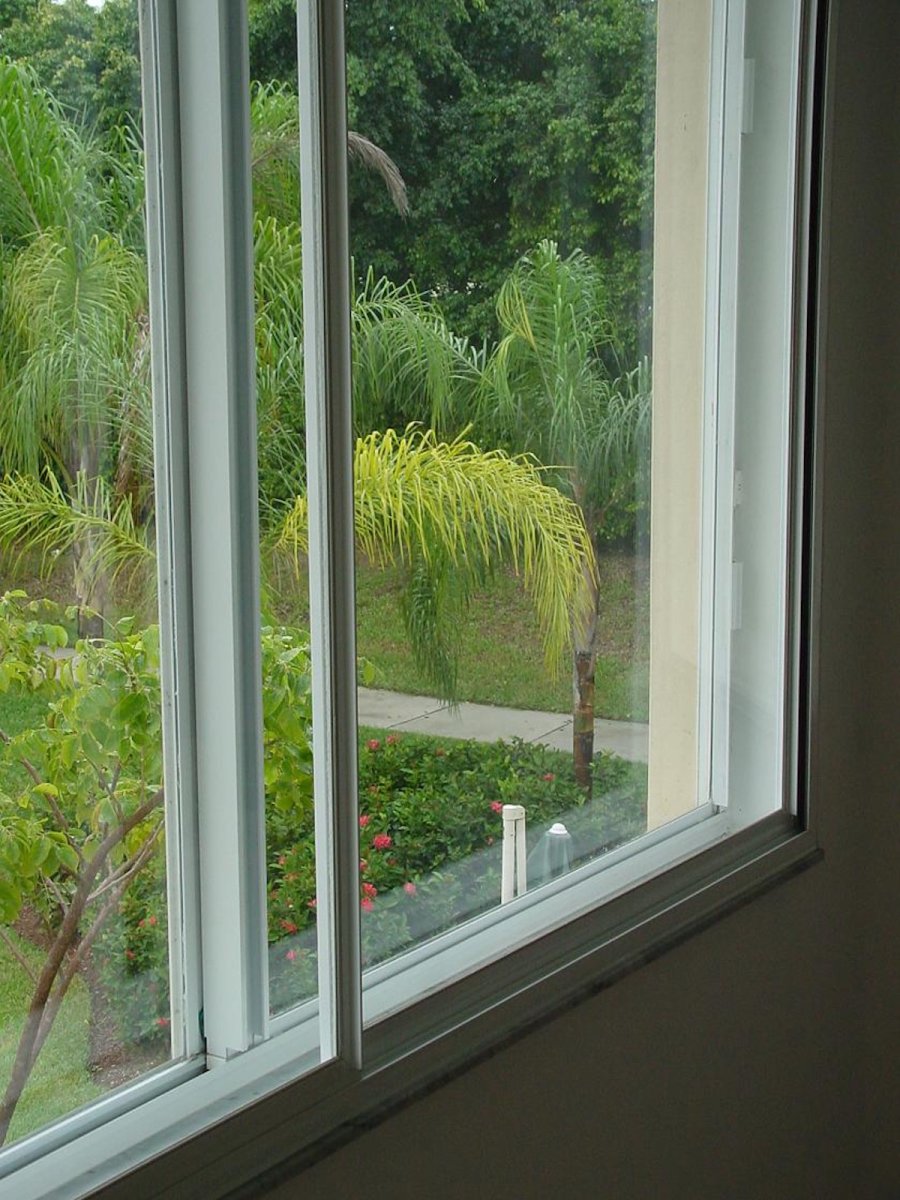

We may earn revenue from the products available on this page and participate in affiliate programs. Learn More ›
Whether it’s highway traffic, loud neighbors, or birds chirping, if you don’t have sound proof windows, some noise from the outside world is bound to disrupt your daily activities, especially if the racket intrudes when you’re in a bedroom or other area intended as a sanctuary or work space. While you can’t control what goes on outside, you can block (or at least reduce) the noise by soundproofing windows using these techniques. Whether you implement one of these strategies or a combination thereof, you may find that soundproofing windows is your secret to attaining inner peace.
Soundproofing windows in your home can help you dampen noise for better sleep, and block out ambient noise in your home office. Window inserts are probably the most effective options, but they are expensive—they’ll set you back $300 to $800 per insert. Replacing older single-pane windows with updated double-pane windows, which cost $350 to $900 (and sometimes more) is another effective solution, albeit another big investment. A more affordable way to soundproof windows is to seal window gaps with acoustic caulk, which costs just $10 to $20. Sound-reducing window treatments, which start at about $20 each, are another cost-effective way to go.
1. Install window inserts.

If you live in an environment with heavy noise pollution, such as honking car horns, wailing sirens, or music blasting from next door, utilizing soundproofing window inserts is the most effective way to reduce the cacophony. These glass inserts are installed in the window frame a few inches in front of the interior face of your existing window. The air space between the insert and the window keeps most sound vibrations from passing through the glass, resulting in greater noise-reduction benefits than double-pane windows alone (more on these ahead). The most effective inserts are made of laminated glass, a thick glass consisting of two layers of glass with an intervening layer of plastic that effectively blocks vibrations. Some companies that make these inserts include Indow, Soundproof Windows, and CitiQuiet.
On the Sound Transmission Class (STC) scale that reflects the decibel reduction in noise volume that a window provides, soundproof windows typically measure between 48 and 54—the higher the STC, the greater the noise-reduction benefit. At the upper end, this means that a 98-decibel (db) outside noise (e.g., a motorcycle engine) is heard at only 44 db indoors (98 minus 54), which is no louder than a typical indoor conversation. You’ll get more noise reduction benefits by installing an insert in front of a single-pane window than you would with a double-pane window. This is because the STC of a double-pane window is often higher to begin with, so an insert won’t increase its overall STC as substantially. An insert for one window typically costs between $350 and $800 installed, which is less than or equal to the cost of the next option for soundproofing windows: a window replacement.
2. Replace single-pane windows with double-pane equivalents.

If you experience moderate outdoor noise pollution, such as the occasional lawn mower or a passing car, you may wish to replace single-pane windows with double-pane windows. Single-pane pane windows, often found in homes 15 years old or older, have just a single piece of glass in the window frame, while double-pane windows, the standard in newer homes, consist of two pieces of glass with air between them. Single-pane windows provide no air barrier between the outside and the glass, so they permit virtually all outdoor sounds to vibrate through the glass, resulting in a noisy interior.
Single-pane windows have an STC of between 26 and 28, which is only a little over half that of soundproof windows. At the upper end of this range, the window would reduce the noise volume of a passing car (70 db) to 42 db (70 minus 28). In contrast, the air space between the individual panes of a double-pane window helps halt the vibration of outdoor sounds through the glass, resulting in greater noise reduction benefit translating to an STC of 26 to 35. Compared with a single-pane window with an STC of 28, a double-pane window measuring in at 35 would reduce the noise volume of a passing car to only 35 db—offering a 7-decibel greater reduction in noise than the single-pane window (70 minus 35). While this may not seem like much, to the listener, a 7-db difference results in a perceived volume reduction of around 87 percent. Replacing one single-pane window with a double-pane equivalent will run you $350 to $900.
RELATED: Soundproofing a Room: The Two Best Ways to Dampen Noise Without Tearing Down Your Walls
3. Seal gaps along windows with acoustic caulk.

Small gaps between a window frame and an interior wall can let outdoor noise into your home and keep your windows from performing at their STC rating. A simple way to seal these gaps is to fill them with an acoustic caulk, such as Green Glue Acoustical Caulk. This noiseproof, latex-based product reduces sound transmission and maintains windows’ STC but still allows you to open and close the windows.
Applying acoustic caulk is the easiest and most inexpensive way to soundproof windows. If there is already silicone caulk around the window frame, remove it with a putty knife. Cut a quarter-inch opening in the tip of the acoustic caulk tube with a utility knife, load the tube into a caulking gun, and pull the gun’s trigger to apply a thin bead of caulk in the gap between the interior window frame and interior wall.
Acoustic caulk readily bonds with most window frame and wall materials, including wood and drywall. More flexible than regular silicone caulk, acoustic caulk won’t shrink or form new cracks over time as you operate your windows; it’s also ultra-durable, lasting for several years before it requires re-caulking. Though you’ll most often find it white, acoustic caulk is available in a variety of hues. Some products turn clear as they dry, while others remain their original color but can be painted to match the color of interior walls.
4. Hang sound-dampening curtains to block outside noise.

To soften noise as well as reduce harsh glare, hang sound-dampening curtains. NICETOWN’s blackout curtains, which were the top overall pick in our researched guide to the best soundproof curtains, are a top-quality option. Sound-dampening curtains, which usually cost $20 to $60 per panel, are made of a thick, heavy fabric such as velvet, and are typically lined with vinyl or a similar material that absorbs sound. These curtains also minimize echoes. Because they dampen but do not block sound entirely, they’re better suited for light noise pollution that may interrupt sleep, such as crickets or birds chirping, than they are for dampening the sound of heavy street traffic.
Many of these window treatments also serve as quality blackout curtains, which have a foam backing that helps block out light. Curtains that absorb sound and block light are great options for soundproofing bedrooms and other spaces designed for sleep and relaxation. They are especially popular with people who work night-shift hours and sleep during the day.
RELATED: How to Soundproof an Apartment Without Opening Up Walls
5. Install double-cell shades.

Cellular shades, also known as honeycomb shades, consist of rows of cells or hexagonal tubes of fabric stacked on top of each other. These shades serve several purposes: They block out light, prevent indoor heat gain in the summer and retain heat in winter, and absorb sound that vibrates into a room to reduce the echo. While single-cell shades have a single layer of cells and absorb limited sound, double-cell shades (such as those by First Rate Blinds) have two layers of cells and thus absorb more sound. Like sound-dampening curtains, they’re best suited for people who experience low levels of noise pollution.
Final Thoughts
Whether in an urban environment where the noise of blaring horns is enough to drive you mad, or in a rural neighborhood where early-rising roosters create a cacophony, sometimes you just need relief from the racket. Addressing deficiencies in your windows’ soundproofing is one way to do that.
You may elect to replace your windows altogether, or you might choose to layer in some sound-blocking elements. Either way, relief from exterior racket isn’t too difficult to find. As for that drum kit your in-laws bought for the kids, you’re on your own there, though soundproofing your doors might be a good start.
FAQs
The most affordable way to soundproof your windows is to caulk them with acoustic caulk. Remove any existing silicone caulk and recaulk with a product that is specifically designed to block window noise. A tube of acoustic caulk costs about $20. Window treatments are another economical way to soundproof your windows.
If you have single-pane windows or have no soundproofing materials in place, the sound of the wind blowing through the trees may be loud enough to permeate the windows. Or, you could be hearing wind whistling into the house, entering through gaps between window sashes and other parts of the window housing, such as the sill, jambs, or casing.
You can’t purchase 100 percent soundproof windows; they don’t exist. Noise-reduction windows can block up to 90 to 95 percent of sound.
